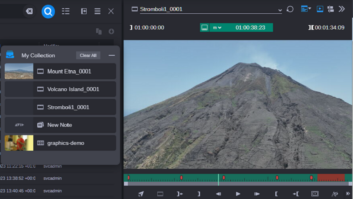Our customers are constantly seeking new innovations to improve service quality and network efficiency. The pressure is on us to provide reliable and highly efficient solutions.
In the satellite broadcast industry, for example, we knew that as the industry moves from SD to HD and to Ultra HD (UHD) television, and the demand for more bandwidth technology increases, we had to develop new technologies to bring more bits per hertz.
Consequently, we teamed up with DVB to help create a new satellite transmission standard, DVB-S2X, to enable reduced costs and increased speeds for operators, as well as new services and higher transmission efficiency for both the broadcast and VSAT industries.
As demand for new satellite services, such as Direct-To-Home (DTH) UHD 4K broadcasting, grows, DVB-S2X will become an instrumental enabler. We have demonstrated transmissions to DTH terminals and the transmission scheme showed up to a 20% throughput gain, using an unaltered regular geostationary satellite transponder.
We have also recently launched another new return transmission technology. Eliminating the headache of choosing between SCPC and MF-TDMA return technologies, our solution, Mx-DMA or Cross-Dimensional Multiple Access, combines the best qualities of both. On top of improved efficiency, Mx-DMA also enhances the signal availability, helping our customers further improve their service quality.
The rise of High Throughput Satellite (HTS – be it Ka, Ku or C-band) is undoubtedly a blessing, creating a new momentum that enables our data customers to offer telecommunication services, in most cases, at a much lower cost. This is key when competing with alternative terrestrial solutions.
The introduction of HTS has also had a major impact on the satellite industry’s business model and value chain. The first US HTS were launched by technology companies that gradually became fully vertically integrated; they operate their own telecom services on their own satellites.
This has had a profound impact on the profitability and viability of other service providers and satellite operators who used to be their customers and suppliers. Meanwhile, we start to see a new trend where the ‘traditional’ satellite operators launch their own HTS on which they sell ‘MHz capacity’. I’m convinced this trend will expand further, generating strong business opportunities for technology companies like Newtec.
IBC sees the European launch of our new multiservice platform, Newtec Dialog. There is a constant shift in which applications are being used more and which are being used less. Broadcasting services will always remain key but, looking past that, we have seen trunking applications over satellite decrease due to more fibre roll-outs. Fortunately, consumer broadband, mobile backhauling, oil and gas and mobility applications on land, sea and air represent a major growth opportunity.
Our new multiservice platform, Newtec Dialog, allows service providers to build and adapt their infrastructure easily as their business and the satellite market grows and changes. Its flexibility means it can support any type of application, from consumer and enterprise VSAT, to broadcast and mobile backhauling, all from one platform and with the most efficient modulation and bandwidth allocation. Newtec Dialog supports several return channel technologies, including our new Mx-DMA.







